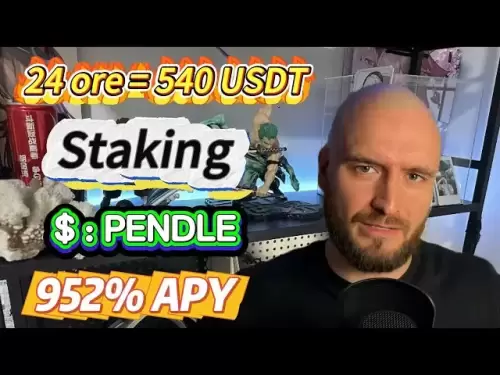-
 Bitcoin
Bitcoin $107,341.7259
0.15% -
 Ethereum
Ethereum $2,438.6204
0.70% -
 Tether USDt
Tether USDt $1.0003
-0.02% -
 XRP
XRP $2.1866
1.94% -
 BNB
BNB $649.0952
0.36% -
 Solana
Solana $150.9602
5.63% -
 USDC
USDC $0.9999
0.00% -
 TRON
TRON $0.2742
0.40% -
 Dogecoin
Dogecoin $0.1645
1.93% -
 Cardano
Cardano $0.5669
1.18% -
 Hyperliquid
Hyperliquid $37.8286
4.19% -
 Bitcoin Cash
Bitcoin Cash $491.4669
-2.74% -
 Sui
Sui $2.8150
3.06% -
 Chainlink
Chainlink $13.4184
2.91% -
 UNUS SED LEO
UNUS SED LEO $9.0809
0.27% -
 Avalanche
Avalanche $18.0295
2.60% -
 Stellar
Stellar $0.2396
1.19% -
 Toncoin
Toncoin $2.8587
0.13% -
 Shiba Inu
Shiba Inu $0.0...01160
2.59% -
 Litecoin
Litecoin $86.4192
1.45% -
 Hedera
Hedera $0.1486
1.19% -
 Monero
Monero $308.4324
0.87% -
 Polkadot
Polkadot $3.4202
1.43% -
 Bitget Token
Bitget Token $4.6436
-0.34% -
 Dai
Dai $0.9998
-0.02% -
 Ethena USDe
Ethena USDe $1.0002
0.00% -
 Uniswap
Uniswap $7.1527
3.29% -
 Pi
Pi $0.5357
-8.45% -
 Pepe
Pepe $0.0...09588
4.61% -
 Aave
Aave $259.9759
0.81%
What is token destruction?
Token burning, or destruction, permanently removes crypto tokens from circulation, aiming to increase scarcity and potentially boost value. Transparency and verifiable methods are crucial for a successful and trustworthy burn.
Mar 12, 2025 at 03:51 am
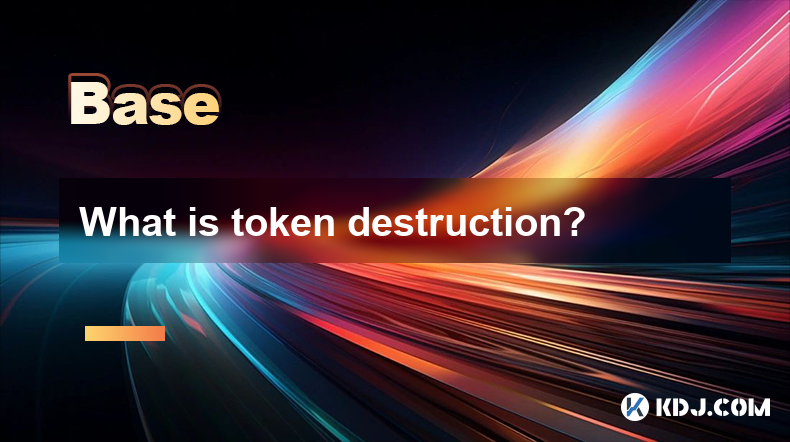
Key Points:
- Token destruction, also known as token burning, permanently removes tokens from circulation.
- It's a deflationary mechanism used to increase scarcity and potentially raise the value of remaining tokens.
- Various methods exist for token destruction, each with its own implications.
- Understanding the reasons behind a token burn is crucial for assessing its impact.
- Not all token burns are created equal; transparency and verifiable mechanisms are essential.
What is Token Destruction?
Token destruction, often referred to as "token burning," is the irreversible removal of cryptocurrency tokens from the circulating supply. This process permanently reduces the total number of tokens available, effectively shrinking the overall market capitalization. Think of it as digitally incinerating tokens, making them permanently inaccessible. This action directly contrasts with token creation or minting, which increases the supply.
Why are Tokens Destroyed?
The primary motivation behind token destruction is to create deflationary pressure. By reducing the supply of tokens, the existing tokens become scarcer. Basic economic principles suggest that increased scarcity can lead to an increase in demand and, consequently, a rise in price. This is particularly appealing in volatile cryptocurrency markets where inflation can erode value.
How are Tokens Destroyed?
The mechanics of token burning vary depending on the specific cryptocurrency and its smart contract design. There isn't a single universal method. Here are some common approaches:
- Sending tokens to a designated "burn address": This is a widely used method. A specific, publicly known cryptocurrency address is created, and tokens sent to this address are permanently lost, effectively removed from circulation. The transaction is publicly verifiable on the blockchain.
- Automated burning mechanisms within smart contracts: Some cryptocurrencies have smart contracts programmed to automatically burn tokens based on predefined conditions, such as a percentage of transaction fees or a portion of newly minted tokens. This ensures consistent and predictable deflation.
- Community-driven burns: In some cases, the cryptocurrency community might vote or collectively decide to burn a certain number of tokens. This usually requires a consensus mechanism within the cryptocurrency's governance structure.
- Company buybacks and burns: Similar to stock buybacks, a company might use its own funds to purchase tokens from the open market and subsequently burn them. This demonstrates a commitment to increasing token value.
Understanding the Impact of Token Destruction
The impact of token destruction can be multifaceted and isn't always straightforward. While it aims to increase scarcity and potentially value, several factors influence the actual outcome:
- The magnitude of the burn: A small burn might have a negligible effect on the price, while a significant burn could create noticeable price fluctuations.
- Market sentiment: Positive market sentiment towards the burn can amplify its price impact. Conversely, negative sentiment could negate any potential benefits.
- Underlying project utility: The value of a cryptocurrency is not solely determined by its supply. Strong fundamentals, utility, and adoption are equally, if not more, important.
- Transparency and verification: A transparent and verifiable burn process is critical. Without clear evidence of token destruction, the whole process loses credibility.
Token Destruction and Inflationary vs. Deflationary Tokens
Token destruction is a core element in the design of many deflationary cryptocurrencies. These cryptocurrencies aim to counter the inflationary pressures often seen in traditional fiat currencies or some cryptocurrencies with unlimited supply. Understanding whether a cryptocurrency is inflationary or deflationary is crucial in assessing its long-term potential.
Is Token Destruction a Guarantee of Price Increase?
No, token destruction doesn't guarantee a price increase. While it aims to create scarcity, other market forces, such as overall market sentiment, regulatory changes, technological advancements, and competition, significantly influence the price. A token burn is just one factor among many.
What are the risks associated with token destruction?
While generally viewed positively, token destruction can carry some risks. For example, an overly aggressive burn schedule might harm liquidity, making it difficult to trade the token. Furthermore, a lack of transparency in the burning process can lead to mistrust and potentially damage the project's reputation. It's important to understand the reasoning behind a burn and how it's implemented.
How can I verify a token burn?
Verification typically involves checking the blockchain explorer for the cryptocurrency in question. You should look for transactions where tokens are sent to the designated burn address. Reputable projects will publicly announce and provide details of their burn events, often including transaction hashes for verification.
Common Questions and Answers:
Q: Is token burning a scam?
A: Not inherently. However, it's crucial to critically assess the project behind the token burn. Look for transparency, verifiable transactions, and a clear explanation of the burn's purpose. Scammers might misuse the concept of token burning to manipulate investors.
Q: How does token destruction affect the value of a token?
A: It aims to increase value by reducing supply, increasing scarcity. However, it’s not a guaranteed price increase; market forces also play a significant role.
Q: What are the benefits of token destruction?
A: Potential benefits include increased scarcity, potentially higher price, and a demonstration of project commitment to long-term value.
Q: Are all token burns equal?
A: No. The size of the burn, the transparency of the process, and the overall project health all influence the impact. A small, poorly documented burn might have little effect, while a large, transparent burn in a strong project could have a significant positive impact.
Q: Can token destruction prevent a cryptocurrency from failing?
A: No. While it might help in specific circumstances, token destruction cannot single-handedly prevent a cryptocurrency from failing. Underlying project issues, lack of adoption, or technological flaws can still lead to failure despite token burning.
Disclaimer:info@kdj.com
The information provided is not trading advice. kdj.com does not assume any responsibility for any investments made based on the information provided in this article. Cryptocurrencies are highly volatile and it is highly recommended that you invest with caution after thorough research!
If you believe that the content used on this website infringes your copyright, please contact us immediately (info@kdj.com) and we will delete it promptly.
- Trump, Bitcoin, and Peter Schiff: A New York Minute on Crypto Chaos
- 2025-06-29 12:30:12
- BTC Price, BlackRock ETF, Fed Signals: Decoding the Crypto Crossroads
- 2025-06-29 12:30:12
- SEI Price Skyrockets Amid ETF Hype and Bullish Uptrend: What's Next?
- 2025-06-29 12:50:11
- Bitcoin Mining, Cryptocurrency, and Blockchain: A New York State of Mind
- 2025-06-29 13:10:11
- Pengu, Altcoin, Leads Charge: What's Driving the Meme Coin Frenzy?
- 2025-06-29 13:30:12
- Bitcoin Market Navigates the Neutral Zone: An On-Chain Data Perspective
- 2025-06-29 13:50:12
Related knowledge
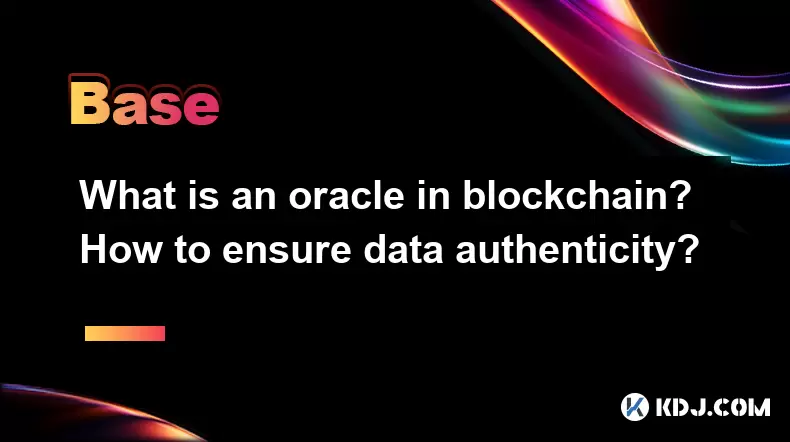
What is an oracle in blockchain? How to ensure data authenticity?
Jun 19,2025 at 08:49pm
Understanding the Role of an Oracle in BlockchainIn the context of blockchain technology, an oracle serves as a bridge between the blockchain and external data sources. While blockchains are inherently secure and decentralized, they cannot access real-world information on their own. Oracles enable smart contracts to interact with off-chain data such as ...
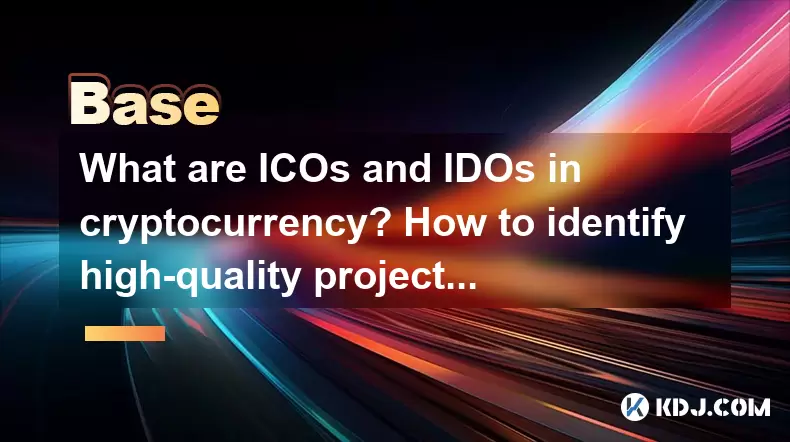
What are ICOs and IDOs in cryptocurrency? How to identify high-quality projects?
Jun 22,2025 at 11:49am
Understanding ICOs in CryptocurrencyInitial Coin Offerings (ICOs) are fundraising mechanisms used by cryptocurrency startups to raise capital for their projects. In an ICO, a company creates and sells its own tokens to investors in exchange for established cryptocurrencies like Bitcoin or Ethereum. The process typically involves the release of a whitepa...
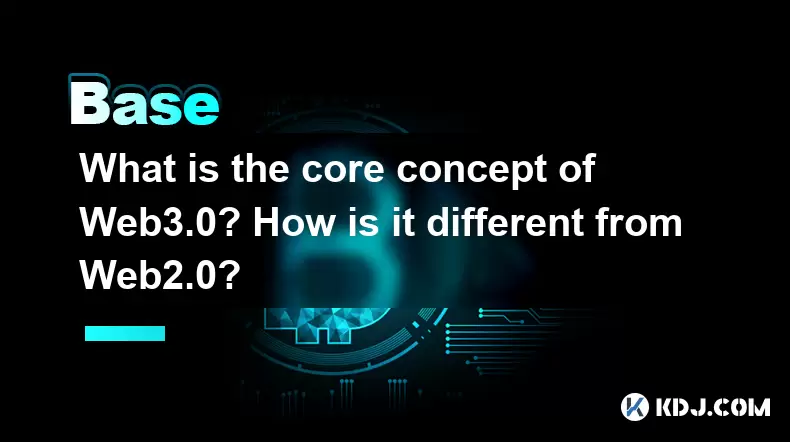
What is the core concept of Web3.0? How is it different from Web2.0?
Jun 21,2025 at 05:56pm
Decentralization as the Foundation of Web3.0The core concept of Web3.0 revolves around decentralization, which fundamentally challenges the centralized architecture of Web2.0. In Web3.0, control and ownership are distributed across a network rather than being held by a central authority or corporation. This is achieved primarily through blockchain techn...
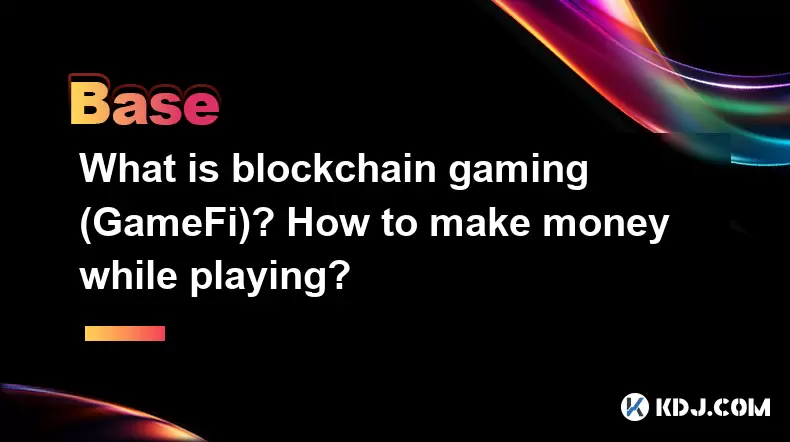
What is blockchain gaming (GameFi)? How to make money while playing?
Jun 20,2025 at 07:56am
Understanding Blockchain Gaming (GameFi)Blockchain gaming, often referred to as GameFi, is a fusion of blockchain technology and video games. It enables players to own in-game assets through non-fungible tokens (NFTs) and earn rewards via cryptocurrencies or token-based systems. Unlike traditional games where items are controlled by centralized develope...
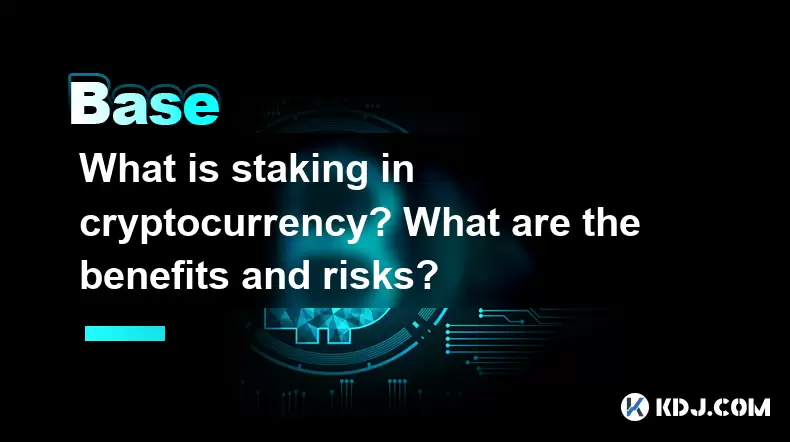
What is staking in cryptocurrency? What are the benefits and risks?
Jun 22,2025 at 10:01am
Understanding the Concept of Staking in CryptocurrencyStaking in cryptocurrency refers to the process of actively participating in transaction validation on a blockchain network that uses a Proof-of-Stake (PoS) consensus mechanism. Instead of miners competing to solve complex mathematical puzzles as in Proof-of-Work systems like Bitcoin, PoS blockchains...
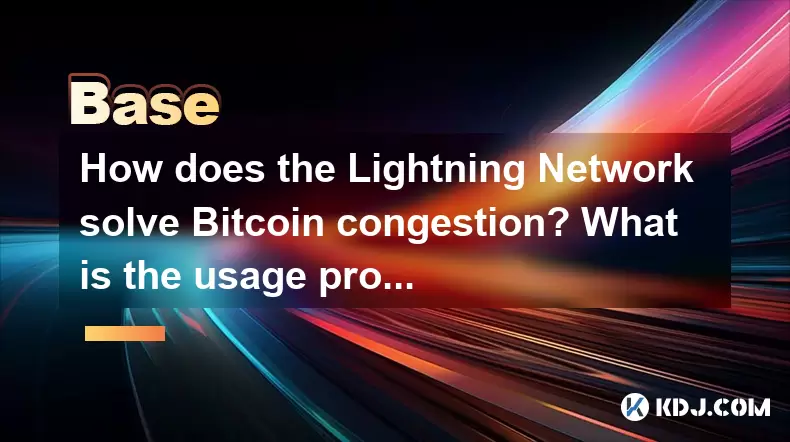
How does the Lightning Network solve Bitcoin congestion? What is the usage process?
Jun 23,2025 at 06:21pm
Understanding Bitcoin Network CongestionBitcoin, as a decentralized digital currency, operates on a blockchain that records every transaction in a public ledger. Each block has a limited size, typically 1 megabyte, which allows for only a certain number of transactions per second (TPS). When the number of transactions increases, the network becomes cong...

What is an oracle in blockchain? How to ensure data authenticity?
Jun 19,2025 at 08:49pm
Understanding the Role of an Oracle in BlockchainIn the context of blockchain technology, an oracle serves as a bridge between the blockchain and external data sources. While blockchains are inherently secure and decentralized, they cannot access real-world information on their own. Oracles enable smart contracts to interact with off-chain data such as ...

What are ICOs and IDOs in cryptocurrency? How to identify high-quality projects?
Jun 22,2025 at 11:49am
Understanding ICOs in CryptocurrencyInitial Coin Offerings (ICOs) are fundraising mechanisms used by cryptocurrency startups to raise capital for their projects. In an ICO, a company creates and sells its own tokens to investors in exchange for established cryptocurrencies like Bitcoin or Ethereum. The process typically involves the release of a whitepa...

What is the core concept of Web3.0? How is it different from Web2.0?
Jun 21,2025 at 05:56pm
Decentralization as the Foundation of Web3.0The core concept of Web3.0 revolves around decentralization, which fundamentally challenges the centralized architecture of Web2.0. In Web3.0, control and ownership are distributed across a network rather than being held by a central authority or corporation. This is achieved primarily through blockchain techn...

What is blockchain gaming (GameFi)? How to make money while playing?
Jun 20,2025 at 07:56am
Understanding Blockchain Gaming (GameFi)Blockchain gaming, often referred to as GameFi, is a fusion of blockchain technology and video games. It enables players to own in-game assets through non-fungible tokens (NFTs) and earn rewards via cryptocurrencies or token-based systems. Unlike traditional games where items are controlled by centralized develope...

What is staking in cryptocurrency? What are the benefits and risks?
Jun 22,2025 at 10:01am
Understanding the Concept of Staking in CryptocurrencyStaking in cryptocurrency refers to the process of actively participating in transaction validation on a blockchain network that uses a Proof-of-Stake (PoS) consensus mechanism. Instead of miners competing to solve complex mathematical puzzles as in Proof-of-Work systems like Bitcoin, PoS blockchains...

How does the Lightning Network solve Bitcoin congestion? What is the usage process?
Jun 23,2025 at 06:21pm
Understanding Bitcoin Network CongestionBitcoin, as a decentralized digital currency, operates on a blockchain that records every transaction in a public ledger. Each block has a limited size, typically 1 megabyte, which allows for only a certain number of transactions per second (TPS). When the number of transactions increases, the network becomes cong...
See all articles





















